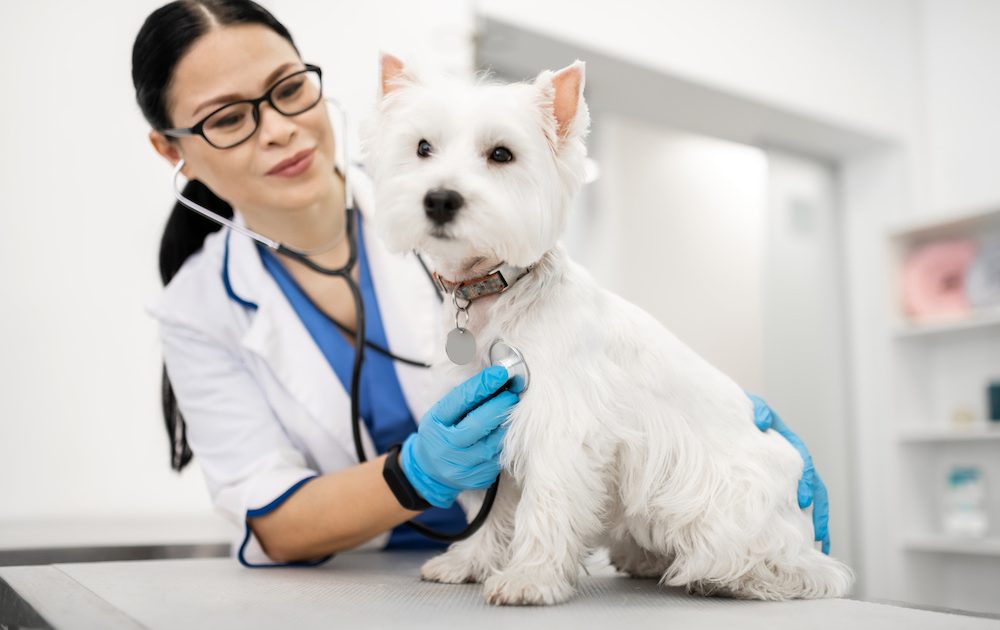One of the most vital aspects of responsible pet ownership is preventative pet care—ensuring your furry companion stays healthy and protected in all situations, especially here in Australia, where environmental factors and native parasites can pose unique challenges.
Dogs are curious by nature, often exploring their surroundings with enthusiasm, which makes them more susceptible to picking up illnesses, parasites, or injuries. That’s why taking proactive steps to maintain their health is essential.
The most effective and straightforward way to do this is by scheduling annual health check-ups with your local vet.
These regular visits allow for early detection of potential health issues, keep vaccinations and parasite prevention up to date, and give you a chance to discuss any behavioural or nutritional concerns.

Are annual dog checkups important?
By staying on top of preventative care, you’re not only extending your pet’s life but also improving their quality of life—giving them the freedom to explore safely and happily.
Your dog should visit the vet at least once per year. These annual checkups are very important for a number of reasons:
Dogs age faster than humans
The old adage that every year of human life equals seven years in a dog’s life is not quite accurate, but dogs do age much more quickly than humans.
The first year of a dog’s life is equal to about the first 15 years of human life. At age two, the dog develops about as much as a human does in nine years.
After that, each year equals about five years of ageing for a dog.
So, by the time a dog is ten years old, it’s more like a 60-year-old adult than a 10-year-old child.
If a dog is going through that much change in just one year, you need to give your vet the chance to check things over and ensure your dog is as healthy as possible.

Preventative health care is one of the best things you can do for your pet, and it’s exactly why Knose Pet Insurance exists—to help make caring for your pet easier and more affordable.
But whether you have pet insurance or not, annual health checks for dogs are non-negotiable when it comes to responsible pet ownership.
Many illnesses, infections, and diseases can develop silently, showing little to no outward signs until they become serious.
Regular vet visits are crucial because only a trained professional can detect these hidden issues through physical exams, diagnostic tests, and expert observation.
Beyond catching medical concerns early, annual check-ups are a great opportunity to get a comprehensive view of your dog’s overall health. Your vet can offer guidance on nutrition, weight management, dental hygiene, joint care, and more.
It’s also the perfect time to raise any questions you might have about changes in your dog’s behaviour, activity level, or habits. These small conversations can lead to big improvements in your dog’s quality of life.

Annual health checkups make vet visits easier for your dog
It’s completely understandable that many dogs feel anxious at the vet. If their only experiences there involve being sick, injured, or uncomfortable, they’ll naturally begin to associate the clinic with stress or fear.
That’s why it’s so important to normalize vet visits by going even when nothing is wrong, such as for routine annual check-ups.
These visits, paired with plenty of positive reinforcement—like treats, praise, and calm reassurance—can help build more positive associations with the vet environment.
Over time, your dog will begin to see the vet as a familiar and less intimidating place, which makes future visits—especially during times of illness or injury—much less stressful for both of you.
Ultimately, preventative care—including annual vet visits—empowers you to make informed decisions and take proactive steps toward giving your dog a longer, healthier, and happier life.

Your dog’s annual health check: What to expect at the vet clinic
First, your dog’s vet will ask a number of questions. You can expect questions about:
- Diet
- Exercise
- Water consumption/thirst
- Pet behaviour and habits
- Bowel movements
- Overall lifestyle, including whether the dog spends much time outdoors
- General health
After gathering background information about your dog’s health and lifestyle, your vet will carry out a thorough physical examination—checking the joints, eyes, ears, teeth, skin, coat, and other key areas for any signs of concern.
Based on the findings, your vet will then provide a range of tailored recommendations. One of the most critical will be vaccinations, which protect your dog from serious and potentially life-threatening diseases like parvovirus.
In addition, your vet may suggest flea, tick, and other parasite prevention treatments, which are essential in many parts of Australia.
If your pet needs support with weight management, dental health, or skin and coat care, your vet will offer practical guidance on how to address these areas effectively.
Many vets also take the opportunity to share personalised dog lifestyle advice to support your dog’s long-term wellbeing.
These insights—covering everything from diet to activity levels—can help prevent future health issues, sparing your pet discomfort and potentially saving you from costly treatments down the line.

Average vet cost of a canine health check
One of the reasons many dog owners skip their annual canine health check is the cost. While these vet visits are important, they are costly.
The cost will depend on what services and products you purchase, but according to ASIC’s MoneySmart, you can expect to pay these averages for your dog each year:
- Vet care: $630
- Health products: $320
- Grooming: $196
Clearly, that is a large chunk of money. One of the ways you can help reduce this cost is with a pet wellness plan.
A pet wellness plan makes it easier than ever to care for your dog and you get better value. It includes an annual vet visit with dental checks, vaccinations, testing, and professional recommendations.

How to prepare for your dog’s annual health checkup
Once you understand how important annual vet visits are, you won’t want to skip them. They help catch health problems early, keep vaccinations up to date, and give you expert advice on your dog’s overall wellbeing.
To make the vet visit easier for your dog, there are a few things you can do:
- Before the visit, try dropping by the vet just to say hello. Let your dog step on the scales and then leave. Many clinics will give your dog a treat, helping them see the vet as a positive place.
- On the day of the appointment, take your dog for a walk or play with them first. A tired dog is usually a calmer dog.
- Use a carrier if your dog fits in one, or a sturdy leash to keep them safe in the waiting room.
- Speak softly and calmly to reassure your dog, especially if there are other pets around.
- In the exam room, keep your hands on your dog to help them stay relaxed. Your presence is comforting, even if the vet staff are great with nervous pets.
Also, if you think you’ll need extra time to ask questions, let the clinic know when booking so they can plan ahead.
With a bit of prep and some positive reinforcement, vet visits can be a lot less stressful—for both you and your dog.

Preventative pet care all year round
A wellness plan is a simple way to keep your dog healthy and happy. Knose Pet Care Plans are tailored by your vet to meet your pet’s specific needs.
They help you stay on top of routine care like vaccinations, check-ups, and parasite protection—making it easier to prevent health issues and avoid unexpected costs.
Plus, they give you peace of mind knowing you’re doing the best for your pet.



